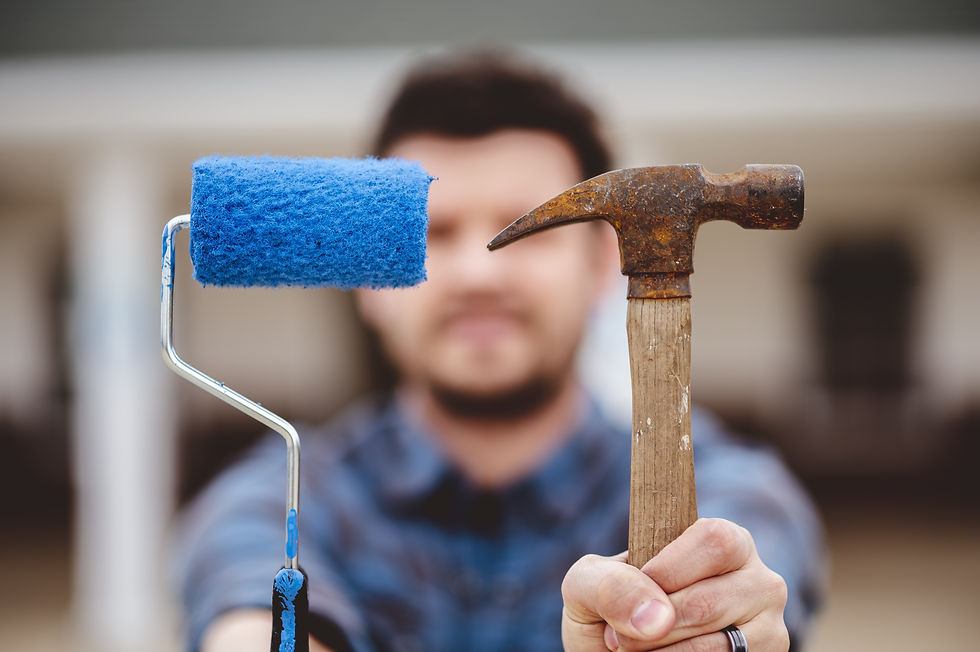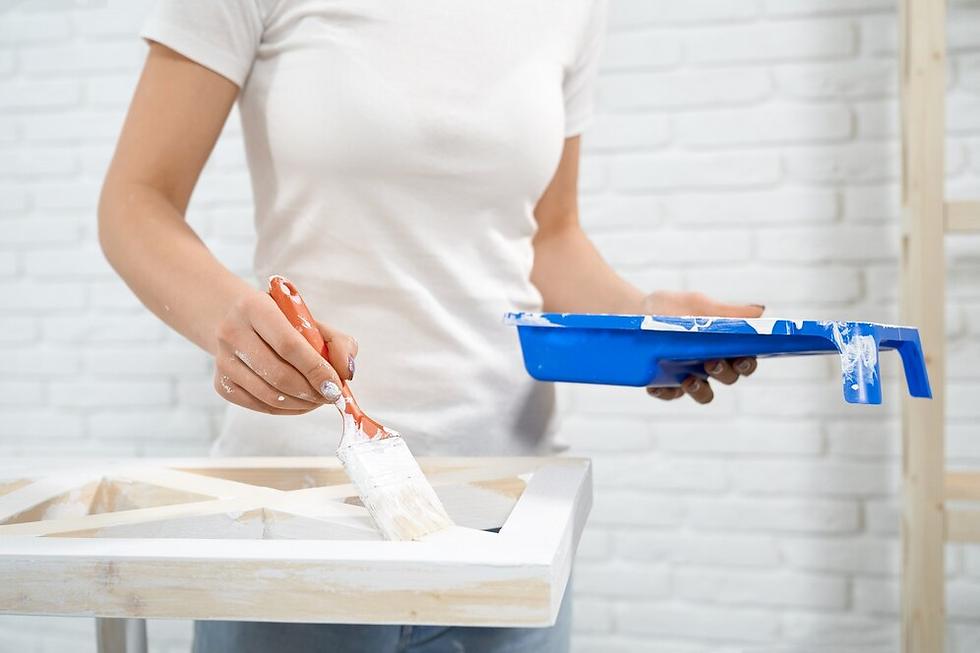Top Paint Scraping Tools for Homeowners
- Staff Desk
- Mar 27
- 5 min read

Revamping your home can be a rewarding endeavor, but it often starts with the meticulous task of removing old paint. Whether you're planning to refresh your walls, breathe new life into furniture, or rejuvenate other surfaces, selecting the right paint scraping tools is crucial. This comprehensive guide will explore the top paint scraping tools available for homeowners, helping to make your DIY projects more efficient and successful.
Why Paint Removal Tools Matter

Understanding the importance of paint removal tools is the first step in any successful home improvement project. These tools not only influence the outcome but also affect the time and safety of your project.
Quality of Work
The right tools ensure that you can remove paint cleanly and efficiently, minimizing damage to the underlying surface. This is vital as a smooth, well-prepared surface allows for better adhesion and a more professional finish with the new coat of paint. Poorly removed paint can lead to uneven surfaces, resulting in a less-than-ideal final appearance.
Time Efficiency
Using appropriate tools can drastically reduce the time needed to complete your project. Manual scrapers may be suitable for small tasks, but larger projects benefit from electric scrapers or chemical strippers that speed up the process. Time efficiency is particularly important when working on tight schedules or preparing spaces for events.
Safety Considerations
Safety is paramount when dealing with paint removal, which can involve sharp tools, heat, and chemicals. Proper tools help mitigate risks, such as cuts from blades or burns from heat guns. Additionally, some old paints may contain hazardous materials like lead, making the use of safe and efficient tools essential to protect your health.
Types of Paint Scraping Tools
Choosing the right type of paint scraping tool depends on the specific needs of your project. Here’s a detailed look at the various tools available:
Manual Paint Scrapers
Manual scrapers are essential for precision work and smaller tasks. They offer control and are perfect for detail-oriented projects.
Standard Handheld Scraper
These are excellent for flat surfaces, such as walls and ceilings. Their simple design makes them user-friendly, and they come with replaceable blades for longevity. Opt for models with ergonomic handles to reduce hand fatigue during prolonged use.
Contour Scraper
Ideal for intricate surfaces, contour scrapers come with multiple blade shapes to match different profiles. They are particularly useful for detailed woodwork or ornate trims, where precision is key to preserving delicate designs.
Putty Knife
While primarily a tool for applying putty, a stiff putty knife doubles as an effective paint scraper for flat surfaces. Its rigid blade can remove paint from edges and corners that other scrapers might miss.
Electric Paint Scrapers
For larger or more demanding projects, electric paint scrapers offer a significant advantage in terms of speed and effort.
Heat Gun
Heat guns apply hot air to soften paint, making it easier to remove. They are ideal for large, flat surfaces, but require careful handling to avoid damaging the material beneath. Always keep the heat gun moving to prevent concentrated heat buildup.
Oscillating Multi-Tool
These versatile tools come with scraper attachments and use rapid oscillation to remove paint. They are not only efficient for paint removal but also useful for various other home improvement tasks, making them a valuable addition to any toolkit.
Chemical Paint Strippers
Chemical strippers are often used alongside physical scraping tools to loosen paint, making it easier to remove.
Gel-Based Strippers
Gel-based strippers are less likely to drip and are ideal for vertical surfaces. They cling to surfaces, giving the chemicals time to work effectively without running off.
Liquid Strippers
Liquid strippers are suitable for horizontal surfaces and can penetrate multiple layers of paint. They are often used for furniture or flat surfaces where gravity aids their application.
Safety Precautions
When using chemical strippers, always follow safety instructions. Wear protective gear and ensure the area is well-ventilated to prevent inhalation of harmful fumes.
Top Recommendations for Homeowners

With an array of options on the market, selecting the right tool can be daunting. Here are tailored recommendations to help you choose based on specific project needs:
Best for Small Projects
For minor tasks, such as touch-ups or detail work, a standard handheld scraper or putty knife is ideal. Models like the Hyde 10450 or Warner 4-Inch Paint Scraper offer comfort and durability, making them perfect for precise, small-scale projects.
Best for Large Surfaces
For extensive areas like entire rooms or large pieces of furniture, electric paint scrapers are recommended. The Wagner HT1000 Heat Gun is excellent for heat-assisted removal, while the Dremel MM50 Multi-Max Oscillating Tool provides versatility for a range of tasks.
Best for Delicate Surfaces
When dealing with delicate or intricate surfaces, precision is crucial. The Bahco 665 Premium Ergonomic Carbide Scraper offers a variety of blade shapes, enabling careful and accurate work without damaging sensitive areas.
Best Chemical Stripper
For those who prefer chemical methods, the Citristrip Paint and Varnish Stripping Gel is a top choice. It's less toxic than many alternatives, making it safer for both the user and the environment, while still effective on various surfaces.
How to Use Paint Scraping Tools Safely

Safety should always be a priority in any DIY project, particularly when scraping paint. Here are essential safety tips to keep in mind:
Protective Gear
Always wear safety goggles, gloves, and masks to shield yourself from dust, debris, and harmful fumes. This is especially critical when using chemical strippers or power tools that generate dust.
Ventilation
Ensure good airflow in the work area, especially when using chemical strippers or heat guns. Proper ventilation helps dissipate fumes and reduces the risk of inhalation-related health issues.
Following Instructions
Carefully read and adhere to the manufacturer's instructions for each tool. Proper use not only prevents accidents but also enhances the tool's effectiveness and longevity.
Testing First
Before committing to a method or tool, test it on a small, inconspicuous area. This ensures that the tool or product is compatible with your surface and will not cause unintended damage.
Environmental Considerations

Proper disposal of old paint and by-products is crucial for environmental protection. Here's how you can manage waste responsibly:
Disposal Regulations
Familiarize yourself with local regulations regarding the disposal of paint and related materials. Many communities offer hazardous waste collection services to help homeowners dispose of these items safely.
Recycling Opportunities
Explore recycling options for paint and materials whenever possible. Some areas have specific programs that recycle paint, reducing environmental impact.
Sustainable Practices
Consider using eco-friendly products that minimize environmental harm. Opt for biodegradable chemical strippers and choose tools made from sustainable materials when available.
Conclusion
Selecting the right paint scraping tools can profoundly impact the success of your DIY painting endeavors. Whether you're tackling a small touch-up or a major renovation, the right tools ensure a smooth, clean surface, ready for a new layer of paint. Always prioritize safety and environmental responsibility to make your home improvement projects both successful and sustainable. Happy painting!



Comments